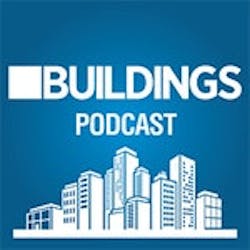Where Resilience and Energy Efficiency Intersect (AHR Expo)
The five most costly Atlantic hurricanes in U.S. history have occurred since 2005, causing widespread destruction up and down the coast, according to the United States National Hurricane Center. More frequent and intense storms inland are causing destructive flooding, and the sea level rise is negatively affecting property values in the Gulf.
The building industry has responded with a focus on resilience – in other words, a building’s capacity to weather an extreme event and either remain operational or bounce back quickly.
But as HVAC and pump manufacturer Danfoss writes, “Priorities do not always easily align, and resilience is no exception. It is not difficult to see resilience as an element of sustainability, a goal ever more widely recognized as essential to progress. But it is also possible to observe potential tensions between resilience and other important dimensions of sustainability, such as energy efficiency and even health and well-being.”
BUILDINGS Podcast
Want more AFH Expo content highlighting Danfoss?
[podcast]
Christoph Trappe speaks with Mark Menzer, director of public affairs with Danfoss, about what facility managers and building owners should know about the evolving HFC refrigerant phase out and what you can do to move forward.
Rather read it? Here’s the transcript instead.
A drive to reduce energy consumption led to the coining of the term “high performance,” Danfoss and Penn State write, but the meaning of “high performance” has evolved as our understanding of sustainability and resilience have evolved. A term that once meant “highly efficient” now encompasses much more than energy.
Buildings that are ready to meet the challenge of resilience must perform efficiently, but must also be ready to stand up to physical challenges that were unthinkable a generation ago.
A new report by Danfoss and Penn State University explores the looming challenge of resilience and the role facilities managers will play in it.
Fail-Safe vs. Safe-to-Fail
Building construction has traditionally focused on making buildings fail-safe. Facilities were thought to be resistant to natural forces because the intensity of natural phenomena was predictable.
But as weather events have become more intense, more frequent and less predictable, Danfoss and Penn State argue that infrastructure should instead be designed as Safe-to-Fail – able to absorb an extreme weather event and quickly overcome it. For example, this might take the form of maintaining a targeted temperature inside a building during a lengthy power outage.
[Related: Healthcare & Hurricanes: Building Resilience for Critical Facilities]
“Safe-to-Fail assumes the certainty of uncertainty,” the report authors write.
How Facilities Managers Should Respond to the Challenge of Resilience
Years of budget cutbacks have forced facilities managers to focus on the quickest payback and the fastest return on investment, but meeting the challenge of resilience requires looking at the future.
The Danfoss/Penn State report describes “a new volatility in underlying conditions” that characterizes the challenge of managing buildings in the 21st century.
However, the news on the facilities management front is hopeful. The report explores several opportunities for facilities managers to rise to the challenge, including:
1. Digitalization.
“Buildings in 2018 are far from ‘smart,’” the report says. But a strong push toward digital building infrastructure would allow real-time monitoring and response to severe events. Cloud-based storage and improvements in data analytics allow facilities managers to diagnose malfunctioning building equipment remotely and make decisions based on fact.
“Building behavior can be adjusted as a resilience crisis unfolds, turning the building from being a crisis victim into a tool of crisis management,” the report notes.
2. Integration with urban systems.
High performance for buildings now includes a building’s ability to interact with and support the surrounding community.
Depending on the nature of the building and the needs of the surrounding community, individual buildings could meet this goal in a number of ways.
Help BUILDINGS Shape 2019!
What BUILDINGS resources are most valuable to you? What would you like to see us provide?
Please take our short (under 2 minutes) survey - just 5 short questions.
Thank you!
A hospital, for instance, is obviously a destination for needed healthcare during an emergency (or any other time), but during a weather event, hospital offices and meeting spaces could do double duty as a community center. Civic buildings can become needed respite areas for displaced residents during weather events that cause widespread damage, like floods and fires.
[On topic: Importance of Immediate Occupancy in Buildings After Disasters]
As the report explains, “The building is seen as an element in an interactive matrix of urban systems and as an instrument in the management of the overarching context of natural conditions experienced by the community as a whole. High performance is defined with reference to the full range – or at least a much fuller range – of the possible contributions the building is capable of making to the community in which it resides.”
More AHR Expo Coverage:
About the Author
Janelle Penny
Editor-in-Chief at BUILDINGS
Janelle Penny has been with BUILDINGS since 2010. She is a two-time FOLIO: Eddie award winner who aims to deliver practical, actionable content for building owners and facilities professionals.


